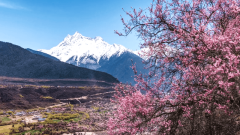Traveling from Xining to Lhasa by rail is one of the most scenic and iconic journeys in the world. The Qinghai–Tibet Railway climbs from the high-altitude plateaus of Qinghai to the roof of the world, threading through wide-open Kekexili wilderness, salt lakes, and the Qiangtang grasslands. This guide explains everything international travelers need to know to book Xining → Lhasa train tickets, choose the best seat or sleeper, prepare for altitude, and arrive in Lhasa smoothly.
WHY TAKE THE XINING → LHASA TRAIN?
The train ride is not just transportation — it’s a viewing platform. Between Xining and Lhasa you will cross vast, almost-uninhabited plateaus where Tibetan antelopes, pronghorns and yaks graze; you will see salt flats, high passes and the rolling Qiangtang grasslands. For many visitors, the slow, comfortable train is the ideal way to arrive in Tibet, allowing time to acclimatize gradually while enjoying unforgettable vistas.
Xining is a common overland gateway to Tibet because it is easier than starting from some remote towns and because the city is served by flights and trains. The Xining Railway Station is well connected to the city center and airport, making transfers simple for foreign visitors.

Xining to Lhasa Train Map
XINING TO LHASA TRAINS, TIMETABLES & FREQUENCY
The Qinghai–Tibet route offers several through trains that stop in Xining before continuing west toward Lhasa. Typical routes and approximate schedules (subject to change seasonally) include:
| Train No. | Start – End | Xining Departure – Lhasa Arrival | Approx. Duration | Frequency |
|---|---|---|---|---|
| Z323 | Chengdu → Lhasa | Xining 11:41 → Lhasa 07:41 (+1) | ~20h | Every other day |
| Z223 | Chongqing → Lhasa | Xining 12:26 → Lhasa 09:55 (+1) | ~21h29m | Every other day |
| Z8981 | Xining → Lhasa | Xining 12:50 → Lhasa 10:20 (+1) | ~21h30m | Daily |
| Z21 | Beijing → Lhasa | Xining 15:28 → Lhasa 11:36 (+1) | ~20h8m | Daily |
| Z265 | Guangzhou → Lhasa | Xining 18:15 → Lhasa 14:17 (+1) | ~20h2m | Daily |
| Z165 | Shanghai → Lhasa | Xining 19:26 → Lhasa 15:05 (+1) | ~19h39m | Daily |
Note: Schedules and frequencies are published by rail operators and can change with seasonal timetables. Treat this table as an operational summary you can use while planning; confirm exact departure and arrival times when you book.
XINING TO LHASA TICKET TYPES: WHICH CLASS IS RIGHT FOR YOU?
SOFT SLEEPER (FIRST-CLASS SLEEPER)
Soft Sleeper compartments contain four berths per private cabin (two upper, two lower) with a lockable door. This class provides more privacy and comfort — a good choice for couples, solo travelers who value sleep and privacy, and anyone nervous about a long overnight ride. Soft Sleepers are the most recommended option for the Xining→Lhasa journey.
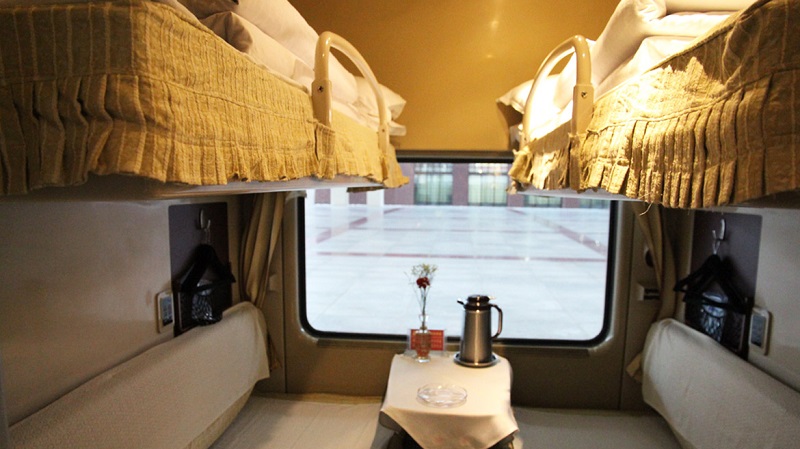
Tibet Train Soft Sleeper
HARD SLEEPER (SECOND-CLASS SLEEPER)
Hard Sleepers are the economical sleeper option: six berths per open compartment (upper, middle, lower). They are widely used and perfectly serviceable for many international travelers, especially those on a budget. Hard Sleeper is a great compromise between price and comfort compared to the Hard Seat.
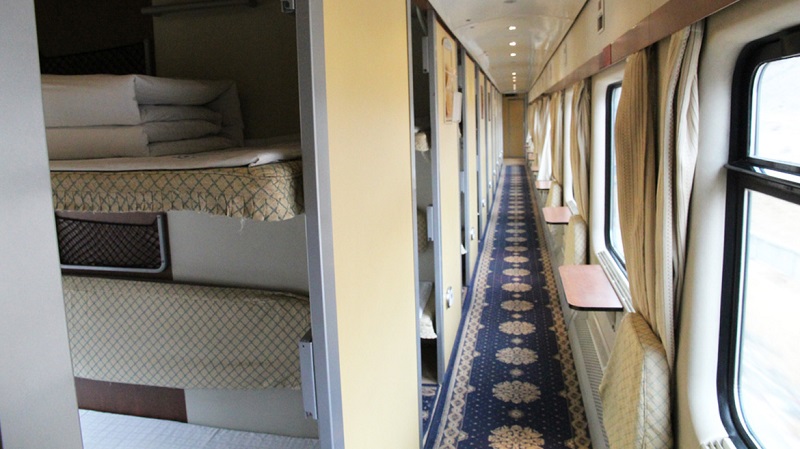
Tibet Train Hard Sleeper
HARD SEAT
The cheapest option, Hard Seat, is a daytime seating layout and not recommended for this long overnight trip because of comfort and privacy limitations. If you are constrained by budget and can tolerate an uncomfortable ride, Hard Seat is an option — but most travelers prefer a sleeper for 19–22 hour journeys.
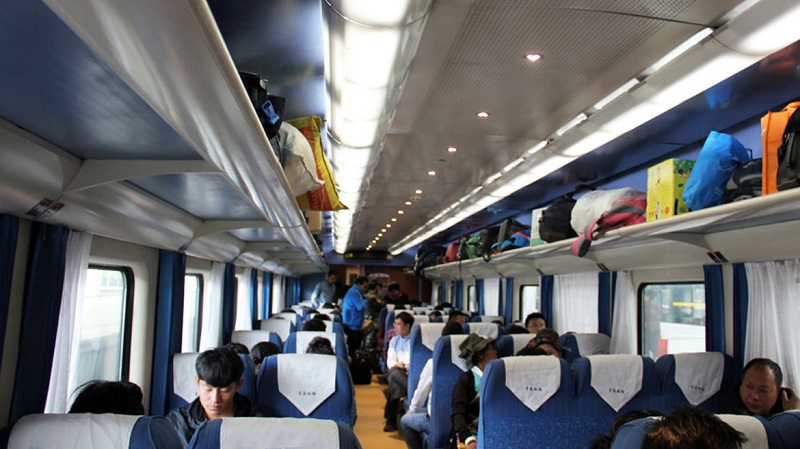
Tibet Train Hard Seat
Another difference between soft sleeper and hard sleeper is that soft sleeper has a door. For travelers who value privacy, soft sleeper is the perfect choice.
SAMPLE TICKET PRICING (USD / PERSON)
| Class | Price (USD) |
|---|---|
| Soft Sleeper | 110 |
| Hard Sleeper | 70 |
| Hard Seat | 32 |
Prices above are indicative and exclude any ticket agent service fees. Fares frequently increase during Chinese public holidays and peak travel periods.
REAL-NAME TICKET SYSTEM & PERMITS
REAL-NAME BOOKING
China’s railways operate on a real-name system: every passenger must travel with a valid passport (international travelers) and the booked name must exactly match the passport name. Each ticket is one person, one identity — no exceptions.
TIBET TRAVEL PERMIT
International visitors must carry a valid Tibet Travel Permit to board the train and to enter Tibet. The permit is mandatory and is checked at the station before boarding. If you book with a reliable agency they will help you apply for and receive your Tibet Travel Permit in time for travel.

Xining Station
HOW TO BOOK XINING → LHASA TRAIN TICKETS: STEP-BY-STEP
OPTION 1 — BOOK DIRECTLY VIA CHINA RAILWAYS (ADVANCED USERS)
China Railway’s official platform allows online bookings, but the registration and identity-verification process can be complex for foreign passports (it includes photo uploads and verification steps). If you’re comfortable with the process and have a Chinese mobile number or Alipay/WeChat payment method, this route is possible.
OPTION 2 — BOOK THROUGH A TRUSTED TIBET TOUR AGENCY (RECOMMENDED)
For most international travelers the easiest path is to book via a specialized Tibet travel agency. A reputable agency will:
- Reserve train tickets on your behalf.
- Manage Tibet Travel Permit applications.
- Provide local meet-and-greet at Lhasa station, and onward transfer to your hotel.
- Supply clear instructions on where and when to collect tickets if collection is required.
China Dragon Travel, for instance, offers full train-ticket booking and permit handling, plus pick-up and local guide services — a turnkey solution for first-time visitors.
TIMING: HOW FAR IN ADVANCE SHOULD YOU BOOK?
Standard online purchase windows are typically up to 15 days before departure; however, demand to Tibet is high. For peak season travels and holiday periods it is wise to secure tickets earlier — many agencies recommend booking at least 20 days ahead and sending required passport scans and application materials promptly.
BOARDING PROCEDURE — FROM XINING RAILWAY STATION TO THE TRAIN
- Arrive at Xining Railway Station about 60 minutes before departure.
- Bring your passport and the Tibet Travel Permit.
- Go through security checks and find your waiting hall.
- When boarding begins, present your passport and permit at the manned ticket gates; staff will scan and allow you onto the platform.
- Locate your carriage and berth according to the ticket details.
If you booked through an agency, you will normally receive a photo or screenshot of your ticket showing train number, departure time and berth number.
XINING TO LHASA: A TWO-DAY ITINERARY
DAY 1: XINING → LHASA (ON THE TRAIN)
Board in Xining and prepare for a long, scenic ride. Carriages are modern and often equipped with oxygen for the plateau. Train food service is available (dining car and mobile vendors), but you may want to bring favorite snacks, water and any personal comfort items for the overnight.
DAY 2: ARRIVAL IN LHASA (3650M)
Arrive at Lhasa Railway Station, where a local guide will usually meet you with a pickup board and transfer you to your hotel — the drive from the station to downtown Lhasa is about 30 km and takes roughly half an hour.
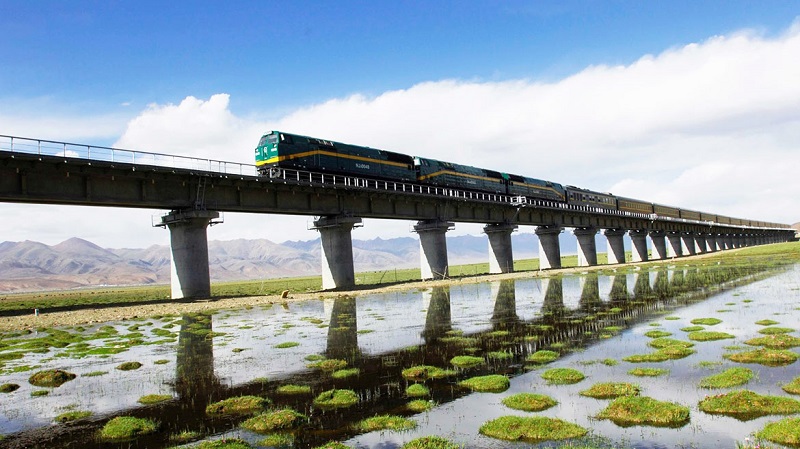
WHAT’S ONBOARD: FOOD, OXYGEN & MEDICAL SUPPORT
FOOD
Most trains have a dining car serving Chinese and Tibetan-style meals; mobile vendors also circulate. If you have specific dietary needs, bring adequate snacks and any special food items.
OXYGEN & ALTITUDE SUPPORT
Trains are equipped with oxygen supply systems. After the train leaves Golmud, oxygen diffusion systems typically activate, and passengers can use oxygen outlets in their carriage if needed. There is usually a medical attendant on board to assist in case of altitude sickness or other emergencies.
TIPS FOR A SMOOTHER TRAIN EXPERIENCE
PACK SMART
Bring layers, a neck pillow, earplugs, motion-sickness remedies if you are sensitive, eye mask, and personal toiletries. Keep a small daypack with essentials at your feet.
CHOOSE YOUR BERTH WISELY
- Lower berths are easiest to access and are slightly larger and more convenient for storing items.
- Upper berths are fine for agile travelers but climbing down at night may be awkward.
- If motion sickness is a concern, book a lower berth and try to sleep near the carriage center where motion is minimal.
HYDRATE & REST
Drink lots of water and avoid alcohol. The gradual ascent helps with acclimatization but resting and slower activity after arrival are still recommended.
LUGGAGE & STORAGE
Many trains have overhead racks and space near the doors; larger suitcases may need to be stored in carriage storage areas or under your berth. If you book via an agency, they will usually plan seating to allow spare seats or storage space for larger group luggage.
XINING TO LHASA TRAINS COMMON QUESTIONS FOR INTERNATIONAL VISITORS
HOW LONG DOES IT TAKE TO BOOK TICKETS?
If you use an agency, ticket booking and permit handling usually takes a few business days after you provide passport scans and required documents. During peak season allow extra time.
CAN I CHANGE OR CANCEL TICKETS?
Refund and change policies vary by fare type and time before departure. Agencies can explain current refund rules and help with changes, but keep in mind that refund windows for China Railway tickets are stricter close to departure.
IS THE TRAIN SAFE?
Yes. The Qinghai–Tibet Railway is engineered for high-altitude stability and safety. Modern trains are well-maintained and staffed with medical personnel. Choose a reputable operator and purchase travel insurance that covers high-altitude trips.
WHY BOOK TICKETS WITH A SPECIALIST AGENCY?
Booking the Xining → Lhasa train independently is possible but can be time-consuming and complex because of permit requirements, real-name verification, and language barriers. A specialized agency like China Dragon Travel can save you time, handle paperwork (including Tibet Travel Permit), book the exact berth you prefer, and arrange a meet-and-greet at Lhasa station so your arrival is relaxed and well-managed.
Travel on the Qinghai-Tibet Train from Xining to Lhasa with China Dragon Travel
If you want help now, China Dragon Travel offers full-service Xining → Lhasa train ticket booking, Tibet Permit application and guaranteed station pickup — perfect for international travelers who want a hassle-free, scenic and safe arrival into Tibet. Contact us for customized train schedules, cabin-class recommendations, and step-by-step assistance to secure your berth and permits for the trip of a lifetime.



